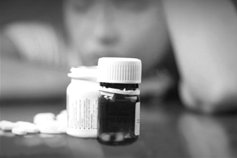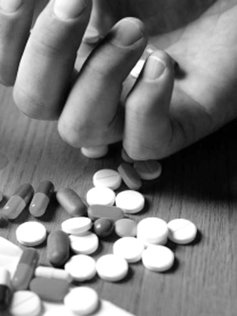Growing Prescription Drug Problem

The latest World Drug Report issued by the United Nations offers some good news. Opium production in Afghanistan has been subjected to a blight that has wiped out a quarter of that country’s production. And production of the coca leaves from which cocaine is made is down by 28 percent in the last decade.
But not to worry. If these drugs are in short supply in some of their major markets - the U.S., Europe, and Southern Asia - there’s an increasing supply of prescription drugs that can take up the slack.
Just to take a look at what can take the place of the heroin that might be in short supply, there’s methadone and suboxone, both used to treat opiate addiction. Ironically, they are themselves drugs of abuse and addiction. There’s also a long list of prescription pain medications including both synthetics (opioids) and prescription opiates. The list includes OxyContin, Vicodin, Lortab, Darvon, Darvocet, Demerol, morphine and codeine. There are even cough syrups that contain dextromethorphan such as Robitussin that could fill the bill.
Then there’s a whole range of stimulant drugs, starting with amphetamines and moving right on through Ritalin, Adderall, Concerta and other drugs. Maybe these can take the place of cocaine for anyone having trouble finding a dealer with the product.

Add to this list all the anti-anxiety or antidepressants on the market that are abused and become addictive. These categories add Valium, Xanax, Prozac, Zoloft and many others to the list. No matter where you are, you don’t need a drug dealer to get high, forget your problems or even to become addicted. You only need a corner drugstore.
All the drugs listed here may be legitimately prescribed and may be properly used by the one receiving the prescription. On the other hand, every drug here is also abused and can be involved in someone’s addiction.
The U.S. Substance Abuse and Mental Health Services Administration (SAMHSA) describes these drugs as “psychotherapeutic prescription drugs.” In other words, they are drugs that change your mental state. SAMHSA classes the drugs into four general groups: pain relievers, tranquilizers, stimulants, and sedatives. In their 2008 report, SAMHSA stated that 52 million people in the U.S. had abused a prescription drug at least once in their lifetime. That is about one person out of every six. Each month, an estimated 6.2 million Americans abuse these drugs. They may intentionally take more of a medication than was prescribed, or they may misuse them by crushing them than smoking, snorting or injecting them. Or they may consume a drug that was not even prescribed for them.
But prescription drug abuse is not just a problem in the U.S. Besides North America, there are significant demand levels for drug rehabilitation treatment of prescription drug addiction in Europe, Africa, Southern Asia and Latin America.
Not only mainstream citizens such as your average men, women, and children are prone to abusing and becoming addicted to medications. Street children in Europe, Asia and Africa and those in the armed services in post-conflict situations may have higher-than-average statistics for prescription drug abuse.
In the last few years, there has been a surge in the production and abuse of synthetic drugs in South East Asia and the Middle East. With the world’s new global economy, even prescription drug addiction can reach into any corner of the planet. This now means that the customer base for pharmaceutical drugs stretches into every country, every city, every slum, every remote village on the map.
If you or anyone you know is struggling with prescription drug addiction, contact Narconon for help.
 ®
®